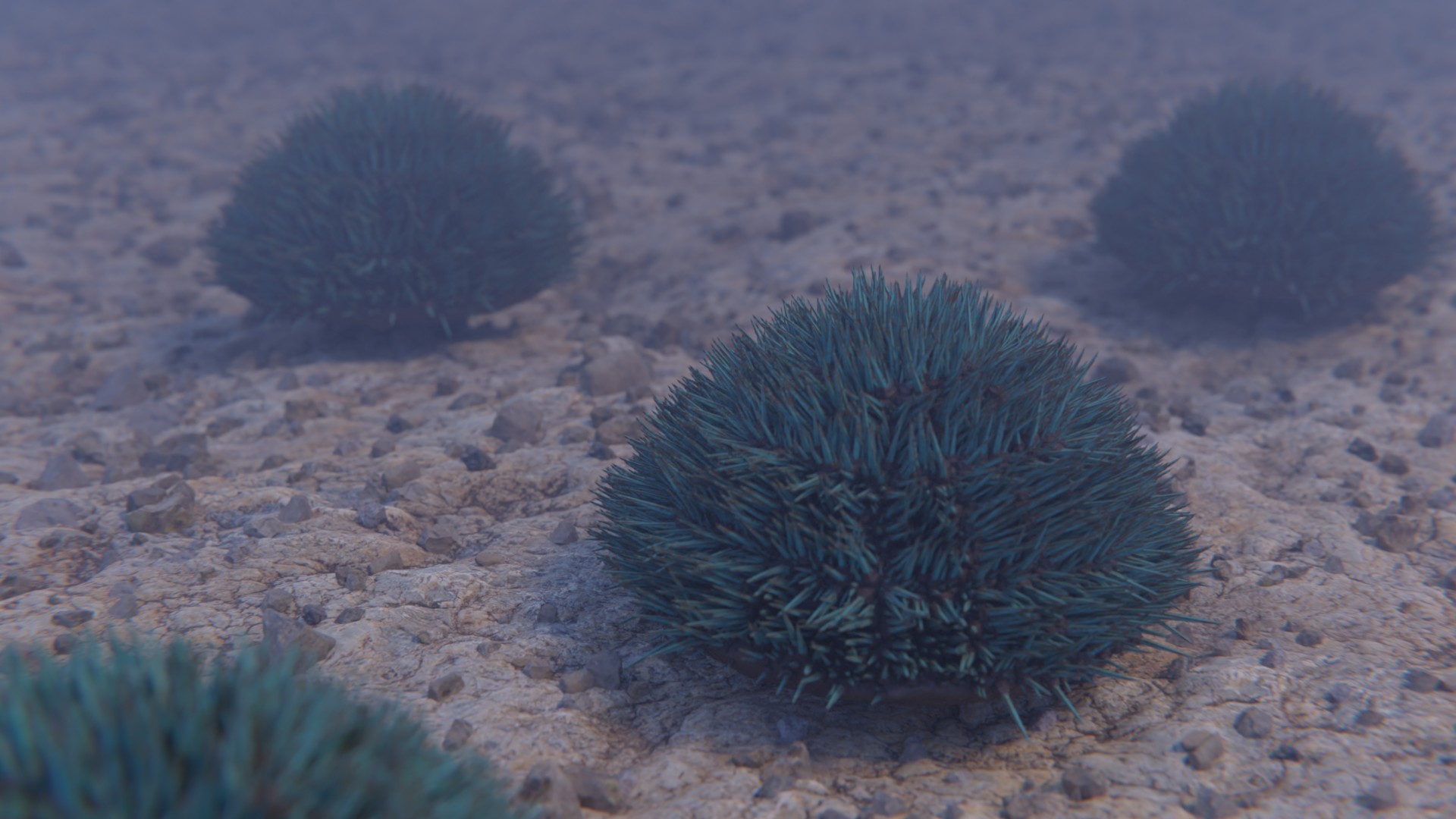Radio Hedgehog
Despite the name, the radio hedgehog is not an 80's British pirate radio station. Instead it is a sessile radiotroph that looks a bit like a cactus and a hedgehog and a sea urchin all combined. Radio hedgehogs are in fact descended from feather bushes, but unlike their ancestors they forgo the nektonic part of their life cycle, instead growing into permanently sessile structures. Pictured here a small stand of radio hedgehogs grow on a now cool lava flow off the coast of Niylan, where the water is still a bit too toxic for most organisms. [Creature Design by Dapper Dino]
Basic Information
Anatomy
Radio hedgehogs have a relatively simple anatomy at the trunk and main cap. The tissue is light and full of simple cavities with sea water in them, but also there are tubules distributed throughout the organism that distribute nutrients. The interesting bit is the spines. Each spine forms as a small bud on the top surface of the cap. Once it is large enough it will start to extrude a hollow filament of copper with a sharp barbed tip. These filaments have a square cross-section and are only a few millimeters thick. These filaments are essentially leaves and reproductive structures rolled into one.
Genetics and Reproduction
While when full grown a radio hedgehog will broadcast spawn isogamous haploid gametes on full moons, very few radio hedgehogs grow from the fertilized spores that sometimes develop from this. As a result radio hedgehogs do not actually broadcast nearly as many gametes as typical for a broadcast spawner instead focusing most reproductive energy on their spines.
Growth Rate & Stages
Life for most radio hedgehogs starts as a spine bud that grows from the cap of an adult. When the spine on the end of the bud comes in contact with soft parts of a nektonic organism of sufficient size it may embed itself in the tissue. While this is painful, the wound is not deep or large, and if the organism avoids infection it is unlikely to cause any long term harm. Further because the spine is primarily copper, which is anti-microbial, infection is not terribly common. After a few hours of swimming the barb on the end of the spine will break from brittle fracture, or the organism may scrape the bud off if it can. Either way the now detached bud will start to grow into a new adult, provided there is enough material and radiation for it to do so. It will resorb the copper spine, and use it to help build its body.
Ecology and Habitats
Hedgehogs grow in the coastal waters around Niylan.
Dietary Needs and Habits
While still primarily feeding on ionizing radiation from fresh volcanic activity and using the minerals released by such activity for most of its body structure, the radio hedgehog has also developed a unique form of photosynthesis. It uses the photoelectric effect to produce supplemental energy that is now available in its shallow habitat. Special tissues line the inside of the spine, and act as wires to transfer energy in the form of electricity proximally down to the bud, and then distribute it to the rest of the organism.
EXTINCT
Genetic Ancestor(s)
Scientific Name
Pseudoerinaceus chalkophoros
Origin/Ancestry
Radiotropha
Lifespan
Until radiation flux is too week, typically about 2 local years.
Average Height
25 cm
Geographic Distribution
Remove these ads. Join the Worldbuilders Guild











Comments